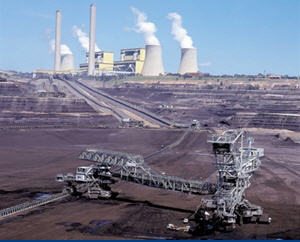It turns out that even when you go on holiday the rest of the world doesn’t. Over the past week the federal government released its proposed reforms to the emissions safeguards scheme.
Emissions from facilities which this scheme covers are expected to total about 143Mt in the financial year [FY] to 30 June 2023. Under the scheme proposals, the intention is that emissions from covered facilities fall 43% to 100Mt by 2030.
To do this, facilities will be required to cut emissions by 4.9% per year or 7Mt per year. Each facility will have its own baseline. By 2030 all facilities will have a baseline, (production adjusted) based around the industry average (emissions per unit of production).
A 4.9% compound cut is in fact slightly greater than what is required to reduce emissions to 100Mt and, if nothing else, changes would result in emissions of 94Mt.
The difference is effectively “spare credits,” or headroom for new facilities or existing facilities that significantly expand production.
At first I thought this wasn’t very much headroom, and indeed it isn’t. But on the other side of the ledger it’s likely that a number of existing facilities will see production fall away.
That’s because the gas and coal industry (along with aluminium) the main industries covered by the legislation, experience a natural decline rate and some facilities will likely have reduced production by 2030.
Paying for ACCUs makes it easy
There will be a “mini” carbon price within the covered sectors with over achievers able to sell credits to under achievers.
However the main alternative to reducing the actual facility emissions is to buy ACCUS (Australian carbon credit units) from some producer. If no one else is selling ACCUS then you can buy them from the government at $75. So the $75/tonne is the maximum cost of carbon abatement in this sector at least until 2030.
There are three observations…
First: $75, and I think that’s a fixed nominal number, is well below the carbon price in Europe and that price is likely to go up. The European price is about €80 or $A124.
Second: $75 is the max price, ACCUS are likely to trade below that for at least a few years.
Third: Even at $75, the total cost in 2030 if the sector did zero abatement and just bought ACCUS is only $343 million. This is not much of an impost. I say this because across the whole of the sector – that is the coal, gas and aluminium sectors – $343 million adds only a couple of percentage points of costs.
Were I not on holiday I could make a better estimate of the total impact, but I have little doubt it’s not really a big deal for the affected businesses. In fact, I venture to suggest it’s the fact that it’s so easily manageable that goes to explain why there is not that much pushback from those businesses.
International credits, be careful
Initially, only domestic ACCUS and within sector credits can be used to satisfy obligations. This means international credits cannot.
However the government has foreshadowed that, despite the murky history of international credits, “high quality” ones may be allowed in the future.
My observation is that if imported credits are allowed, then so will exported credits also be allowed. It could be that this may lead to a rise in the overall price of ACCUS as potentially there may be significant international demand.
Conclusion
The Albanese government scheme provides an incentive for the sector to reduce emissions. However for the next few years at least its likely that buying credits will be cheaper than actually decarbonising.
Still, the direct cost incentive imposed by this scheme is only one of the many decarbonisation pressures facing all kinds of businesses – but particularly carbon intensive ones.
In Europe steel, gas plants, glass, plastics, cement will all face higher carbon costs than their Australian counterparts and so they will end up coming up with the technical solutions.
In the US, the Inflation Reduction Act has provided strong domestic incentives for business to undertake say carbon capture and storage or develop hydrogen processes.
Australian businesses are likely to be as much driven by what happens to their global competitiveness as by the domestic price incentive, and so if they can make the economics work they will decarbonise.
It’s not just cost, it’s also revenue. Green steel, green cement, green aluminium are all likely to sell at a premium.
On balance, this move by the federal government can be supported as a modest step in the right direction. Of course, the obvious concern is that Mother Nature works to an absolute target. Modest steps may be all that can be achieved but they are not enough. The longest journey starts with a single step but along the way there needs to be a bunch of acceleration.











